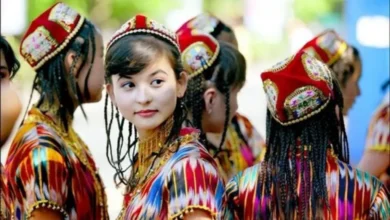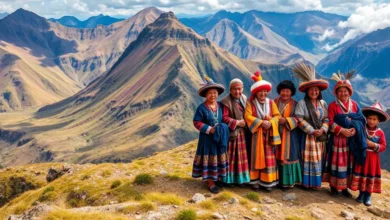Exploring the Vibrant World of the Balinese Ethnic Group: A Hindu Haven in Indonesia
Imagine a place where vibrant festivals light up the night, intricate temple dances tell ancient stories, and a deep spiritual connection ties a community together. Welcome to Bali, an Indonesian island that’s home to the Balinese ethnic group, a Hindu-majority culture renowned for its rich traditions and warm hospitality.
Unlike the rest of Indonesia, where Islam dominates, Bali stands out as a pocket of Hinduism, blending ancient beliefs with a unique island flair. In this article, we’ll dive into who the Balinese are, what makes their culture so special, and why their festivals and dances are worth celebrating. Whether you’re a curious traveler or just love learning about the world, there’s something here for you.
The Balinese people are more than just residents of a tropical paradise—they’re the heartbeat of a culture that’s been thriving for centuries. With their roots stretching back to the Indian subcontinent and Java, they’ve crafted a way of life that’s both spiritual and artistic. From colorful ceremonies to graceful performances, their traditions offer a window into a world where the divine and the everyday dance together. Let’s explore this fascinating ethnic group step by step.

Who Are the Balinese? A Quick Introduction
The Balinese are the native inhabitants of Bali, a small island in Indonesia’s sprawling archipelago. With a population of about 4.2 million, they make up the majority of Bali’s residents. What sets them apart? Their religion. While Indonesia is the world’s largest Muslim-majority country, Bali is a shining exception, with over 80% of its people practicing Balinese Hinduism. This isn’t your typical Hinduism, though—it’s a unique blend of Hindu teachings, local animism, and ancestor worship, shaped by centuries of adaptation.
See also Habesha Kemis: The Timeless Dress Woven with Heritage and Beauty
Habesha Kemis: The Timeless Dress Woven with Heritage and Beauty
Their story begins around the 1st century AD, when Indian traders and priests brought Hinduism to Indonesia. Over time, this faith took root in Java and spread to Bali, especially after the rise of the Majapahit Empire in the 13th century. When the empire fell to Muslim rulers in the 16th century, many Hindu priests, artists, and nobles fled to Bali, cementing its status as a Hindu stronghold. Today, the Balinese proudly carry this legacy forward, living a life steeped in ritual and reverence.
But it’s not just about religion. The Balinese are farmers, artisans, and performers, deeply tied to their land and community. Rice fields stretch across the island like green carpets, and villages buzz with the sound of gamelan music. Their culture is a living, breathing thing—passed down through generations and celebrated with gusto.
Balinese Hinduism: A Spiritual Tapestry
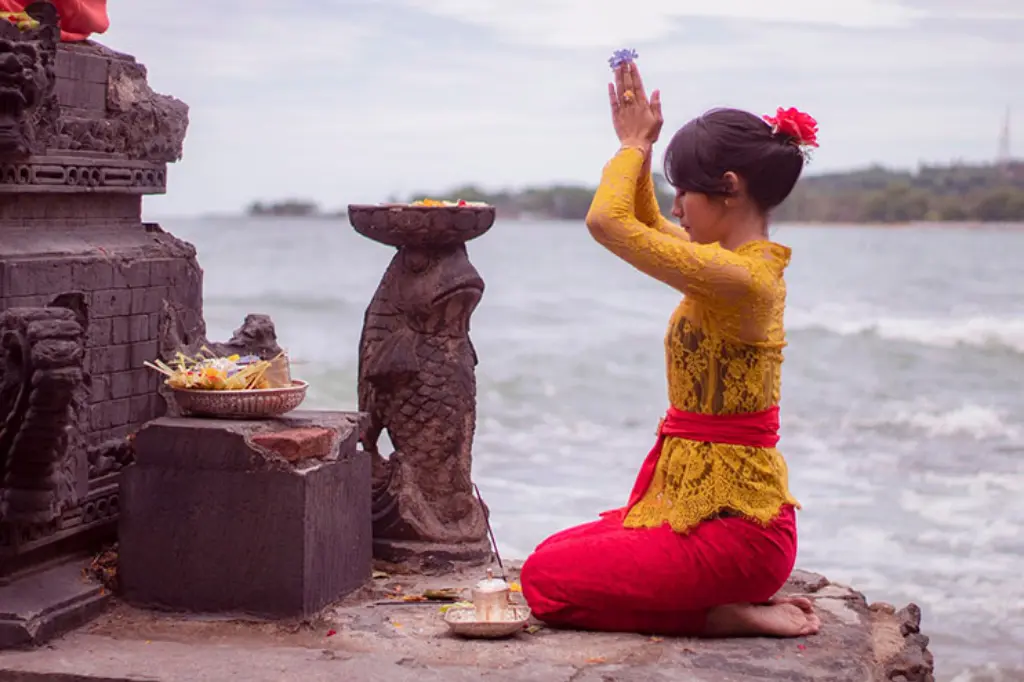
At the core of Balinese identity is their faith, often called Agama Hindu Dharma. It’s a colorful mix of Hindu gods like Vishnu and Shiva, Buddhist influences, and local spirits. The Balinese believe the universe is a balance of good and evil, order and chaos—think of it like a cosmic dance. Their goal? To keep that balance through offerings, prayers, and ceremonies.
Temples, or pura, dot the island like sacred landmarks. There are over 20,000 of them, from small family shrines to grand complexes like Pura Besakih, the “Mother Temple” on Mount Agung. Each temple serves a purpose—some honor ancestors, others protect villages, and a few connect to nature, like sea or mountain spirits. Visiting one feels like stepping into a storybook, with stone carvings and incense filling the air.
See also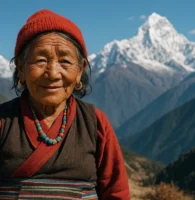 Sherpa People: Guardians of the Himalayas, Keepers of Courage and Culture
Sherpa People: Guardians of the Himalayas, Keepers of Courage and Culture
Daily life revolves around this spirituality. You’ll see women placing canang sari—small baskets of flowers, rice, and incense—at doorsteps or shrines as offerings to the gods. It’s a simple act, but it reflects a big idea: gratitude. The Balinese believe these offerings maintain harmony between humans, nature, and the divine. It’s practical too—evil spirits get distracted by the gifts and leave people alone!
This faith isn’t static. It evolves with every festival, every dance, and every prayer, making it a dynamic force in Balinese life. And nowhere is it more alive than in their celebrations.
Festivals That Bring Bali to Life
If there’s one thing the Balinese do better than anyone, it’s throw a party—a spiritual one, that is. Their festivals are a feast for the senses, blending devotion, community, and art. Let’s look at some of the biggest and brightest.
Nyepi: The Day of Silence
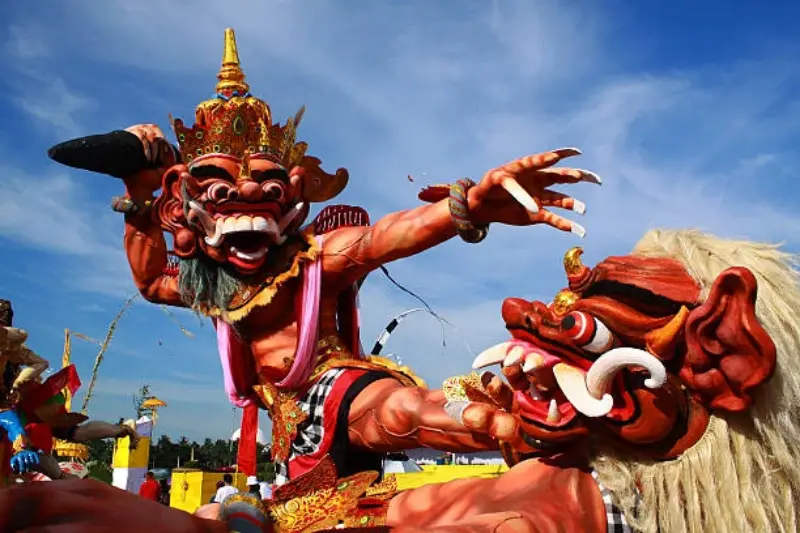
Picture an island where everything stops—no cars, no lights, no noise. That’s Nyepi, Bali’s Hindu New Year, usually in March or April. It’s a day of reflection, but the buildup is anything but quiet. The night before, called Ogoh-Ogoh, villagers parade giant, colorful demon statues through the streets, accompanied by drumming and cheers.
These papier-mâché monsters represent evil spirits, and burning them symbolizes purification. Then, silence falls for 24 hours. Even tourists join in, staying indoors to respect the tradition. It’s a reset button for the soul.
Galungan: Victory of Good Over Evil

Every 210 days (based on the Balinese Pawukon calendar), Galungan celebrates the triumph of dharma (good) over adharma (evil). Streets transform with penjor—tall bamboo poles decorated with coconut leaves and flowers—swaying like natural banners.
Families visit temples, pray, and feast on lawar (a spicy minced meat dish) and babi guling (roast suckling pig). It’s a 10-day affair, ending with Kuningan, when ancestors return to the heavens. Think of it as Bali’s version of a family reunion, with a divine twist.
Odalan: Temple Birthdays
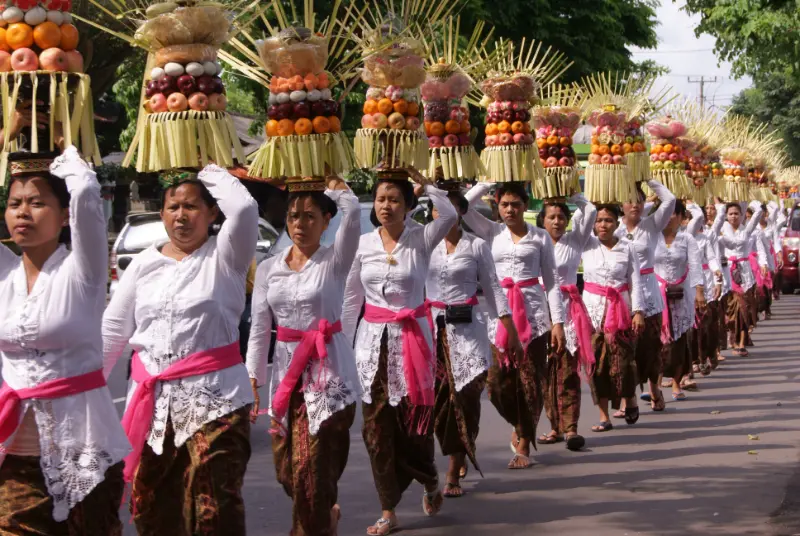
Every temple has its own anniversary, or odalan, celebrated every 210 days. These events are local but lively, with offerings, prayers, and performances. Villagers dress in their finest—think white sarongs and golden headpieces—and the air hums with gamelan music. It’s a chance to honor the temple’s deities and strengthen community bonds. With so many temples, there’s always an odalan happening somewhere!
These festivals aren’t just events; they’re the glue that holds Balinese society together. They remind everyone—young and old—of their shared values and history. And the dances? They’re the cherry on top.
Temple Dances: Stories in Motion
Balinese temple dances are more than entertainment—they’re sacred storytelling. Performed during ceremonies or festivals, these dances bring myths to life with graceful moves and elaborate costumes. The dancers, often trained from childhood, are cultural ambassadors, keeping ancient tales alive. Let’s meet some of the stars.
Barong Dance: The Battle of Balance
The Barong dance is a crowd favorite. It pits Barong, a lion-like protector spirit, against Rangda, the evil witch queen. The story’s simple: good versus evil. But the execution? Spectacular. Dancers in glittering costumes leap and twirl, while Barong’s shaggy mane shakes with every step.
Sometimes, performers playing Rangda’s followers fall into a trance, stabbing themselves with daggers (don’t worry, they’re unharmed—it’s part of the ritual). It’s a dramatic reminder of the eternal struggle for harmony.
Legong: Grace and Precision
If Barong is bold, Legong is delicate. This classical dance features young girls in gold costumes, their eyes darting and fingers fluttering like birds. It’s based on royal court dances from the 19th century and often tells romantic tales, like the story of a kidnapped princess. The movements are so precise that dancers train for years to master them. Watching Legong feels like seeing a painting come to life—soft, slow, and mesmerizing.
Kecak: The Monkey Chant
No instruments? No problem. The Kecak dance uses a choir of men chanting “cak-cak-cak” in rhythm, mimicking monkeys from the Ramayana epic. Performed at sunset (often at Uluwatu Temple), it tells the story of Prince Rama rescuing his wife Sita from the demon king Ravana. The flickering torches, crashing waves, and hypnotic chants create an unforgettable vibe. It’s raw, communal, and a little wild.
These dances aren’t just for tourists—though visitors love them. They’re offerings to the gods, performed with reverence in temple courtyards. The costumes, music, and moves all carry meaning, linking the Balinese to their spiritual roots.
The Role of Art and Music in Balinese Culture
Dance doesn’t stand alone—it’s part of a bigger artistic tapestry. The Balinese are master craftsmen, creating everything from wood carvings to silver jewelry. Their art often reflects Hindu themes—think statues of Ganesha or paintings of mythical battles. Villages like Ubud are hubs for this creativity, drawing artists and collectors from around the world.
Then there’s gamelan, the traditional orchestra that’s the soundtrack to Balinese life. Made up of gongs, metallophones, and drums, it produces a shimmering, layered sound that’s both eerie and joyful. Gamelan accompanies dances, ceremonies, and even shadow puppet shows called wayang kulit. It’s so central to the culture that kids learn it in school, ensuring the music lives on.
This blend of art and spirituality makes every festival and dance a multisensory experience. It’s not just about watching—it’s about feeling the rhythm, seeing the colors, and connecting to something bigger.
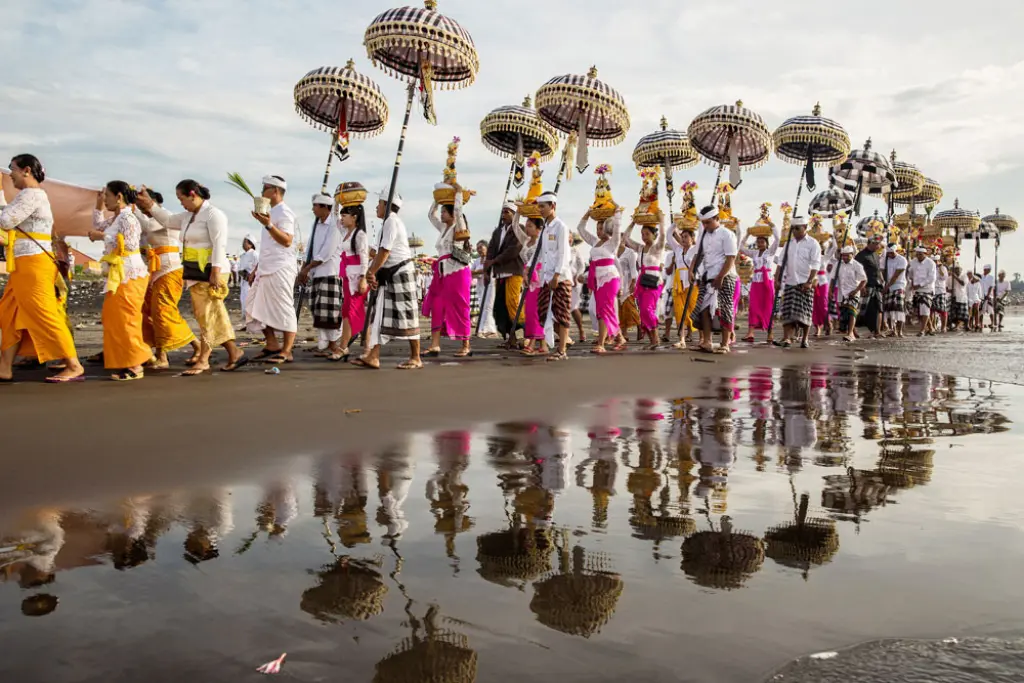
Everyday Life: Community and Tradition
Beyond the big events, Balinese life is grounded in community. Villages operate under a system called banjar, a local council that organizes everything from ceremonies to irrigation schedules for rice fields. Everyone pitches in—whether it’s cooking for a festival or repairing a temple. This teamwork keeps traditions alive and the island running smoothly.
Family is key too. Most Balinese live in compounds with multiple generations, sharing courtyards and shrines. Names follow a quirky pattern: the first child is Wayan, the second Made, and so on, regardless of gender. It’s practical and reflects their focus on order.
Rice farming shapes their days. The subak system, a UNESCO-recognized network of canals and cooperatives, ensures fair water distribution. It’s a perfect example of their harmony-with-nature philosophy—practical yet spiritual.
Why the Balinese Culture Matters Today
In a fast-moving world, the Balinese offer a lesson in slowing down. Their festivals and dances aren’t just relics—they’re living traditions that adapt while staying true to their roots. Tourism has brought challenges, like overdevelopment, but it’s also shared their culture globally. Bali isn’t perfect—poverty and modernization pressures exist—but the Balinese resilience shines through.
Their emphasis on balance, community, and creativity resonates beyond the island. Whether it’s the silence of Nyepi or the energy of Kecak, there’s wisdom in their ways. They remind us that celebrating life—through faith, art, or togetherness—can be a powerful thing.
Wrapping Up: A Culture Worth Celebrating
The Balinese ethnic group is a gem in Indonesia’s crown, a Hindu-majority culture that thrives amid diversity. Their festivals light up the calendar, their temple dances weave timeless stories, and their daily rituals keep their spirit strong. From the quiet beauty of a canang sari to the roar of a Barong performance, they show how tradition can flourish in the modern age.
So next time you hear about Bali, think beyond the beaches. Picture a people who live their faith with every step, who turn every day into a small celebration. The Balinese aren’t just surviving—they’re thriving, and their culture is an invitation to join the dance. What do you say—ready to explore Bali’s magic for yourself?

